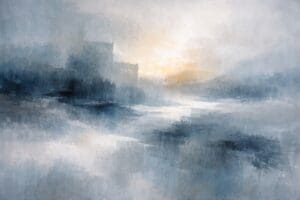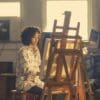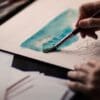LEARN HOW TO DRAW
You will be amazed at how much learning how to draw will help improve your oil paintings. In fact, years ago art students were not permitted to paint until they learned the fundamentals of drawing. Drawing gets you more in touch with value, line and form without the distraction of color. Find a good book on drawing fundamentals and start there.
LEARN ABOUT COLOR
Nothing can confuse a beginner more than color. You need to have a good understanding of color theory if you intend on producing high quality paintings. Concepts like color temperature, hue and intensity are very important and should be studied. Once you have a good understanding of color theory, you must then learn how to mix your colors. There is much more to color mixing then meets the eye. For instance, you cannot mix any old blue with any old yellow and get the perfect green. Certain blues and yellows behave differently than others, so you must learn about the properties of each color.
PERSPECTIVE
Perspective in painting is one of the biggest hurdles for beginners. Sometimes a painting just looks “wrong”, and often it is because the perspective in the painting is off. Learning about perspective will teach you how to properly translate a 3-dimensional world onto a 2-dimensional canvas or other support. Learning perspective is a necessary ingredient toward producing convincing oil paintings. There is of course an exception to this, if you are producing an abstract work and your intentions are to warp the perspective.
MATERIALS
Materials to an oil painter are like what a guitar is to a guitarist. A guitarist cannot play without his instrument nor can he play without understanding how his instrument works. Your painting materials are your instruments. They are what enable you to express yourself, so learning more about them is an absolute must. Learn about the different kinds of brushes and what they do. Know your paints. Not all colors behave the same. Some are more transparent or opaque than others. Know your supports and the difference between them. The list goes on.
TECHNIQUES
There are a plethora of oil painting techniques that you can learn to create your paintings. Techniques like wet on wet, glazing, alla prima, knife painting, etc. should all be explored. Working with various techniques will help you develop your own unique style and help you to produce more interesting paintings.
START WITH A CONCEPT
I remember not too long ago, what a frustrated painter I was. I had 10 or so incomplete paintings collecting dust in the corner of my small studio. I would attempt to complete these paintings over and over again, until finally I had to take a step back and try and understand what I was doing wrong. The reason I lost interest and was unable to complete these paintings, was because I did not have a concept in mind before I started. I would start haphazardly without a clear vision of what I really wanted to accomplish. Concepts are methods for solving problems in a painting. What do you want your painting to be about? When you have a blueprint or roadmap in mind before you start painting, there is no room for diversion. You must stick to your plan.
MASTER YOUR BRUSH
A very important part of oil painting is having control over your brush. Without good brush control , your effectiveness as a painter is limited. Make sure you have the best possible brushes you can afford. One of the biggest mistakes artists make, myself included, is not reloading the brush enough. Make certain you always have enough paint on your brush so that there is always a layer of paint between your brush and the canvas. Do not try and scrub the paint into the canvas. Paint your strokes and leave them be. Don’t over work your brushstrokes.
FAT OVER LEAN
Follow this rule and you will reduce the chance of your paint cracking. Each layer of your oil painting should have a higher oil content then the one below it.
ORGANIZED PALETTE
Having a clean organized palette is an essential part of good painting. Get into the habit of laying out your colors the same way every time you paint. Arrange your colors along the edges of your palette leaving a lot of room in the center for mixing. Don’t be afraid to squeeze out a good amount of paint, especially your whites. You will be more productive if you aren’t continuously stopping to squeeze out more paint. Make certain to include all of the colors you think you will need to complete that session of painting. It’s a good idea to continuously wipe your palette clean during the painting process. Keep some alcohol handy so that you can keep the mixing area of your palette clean.
INSPIRATION
If you are ever feeling uninspired don’t get discouraged. Try taking a walk outside, breath in the air, look around at the beautiful earth God created. Try playing music while you are painting. You will be surprised how music can affect your painting. Visit a museum or local gallery. Viewing other works of art can really get your creative juices flowing.
Source by Ralph Serpe
Disclaimer: The views and opinions expressed in this article are those of the authors and do not necessarily reflect the official policy or position of Irish Artmart.




